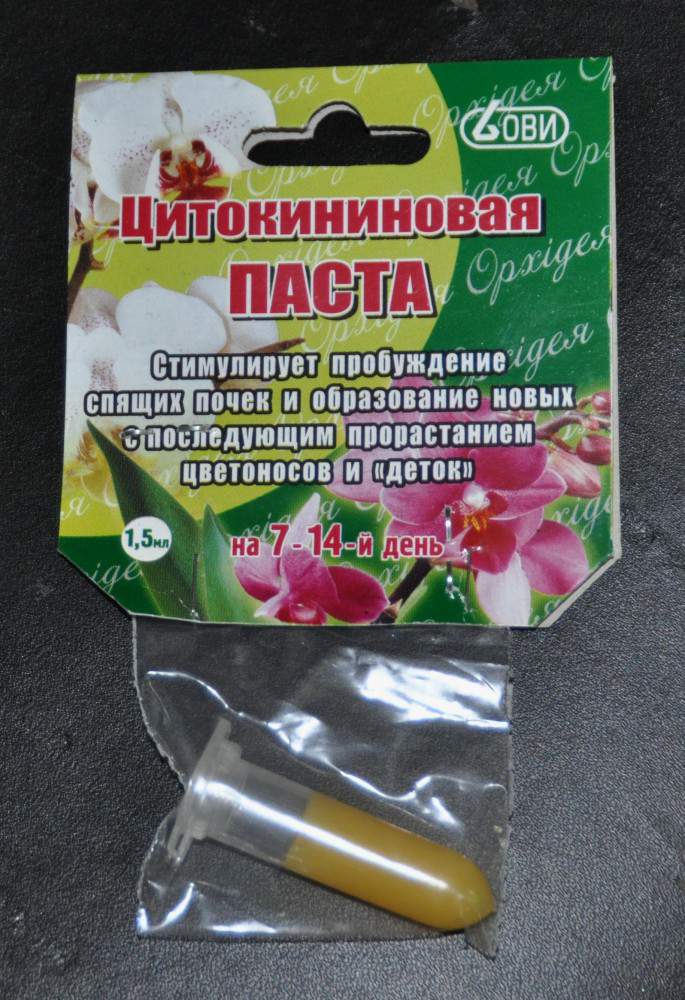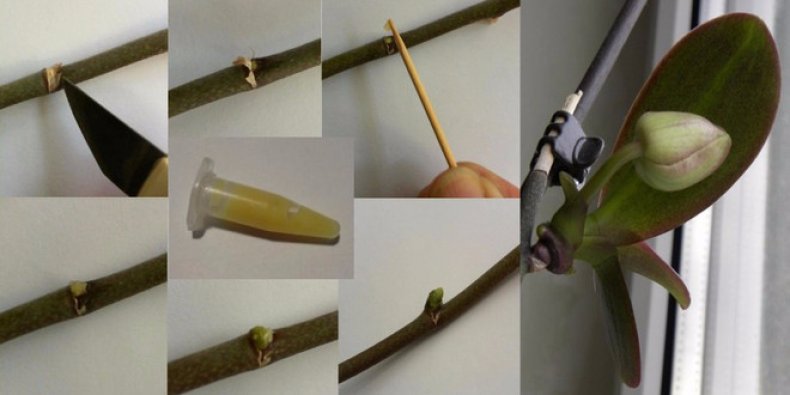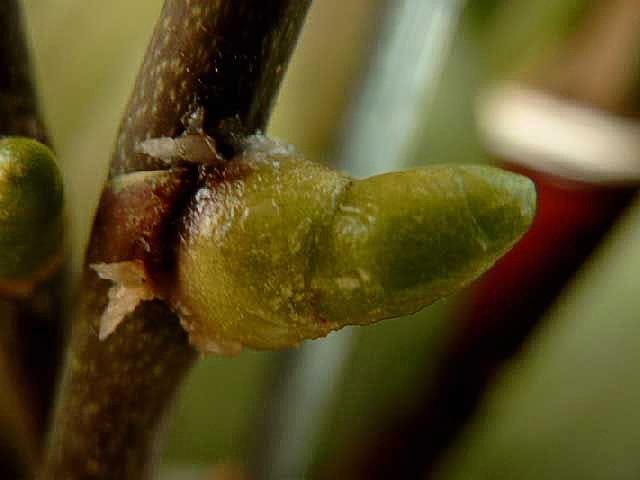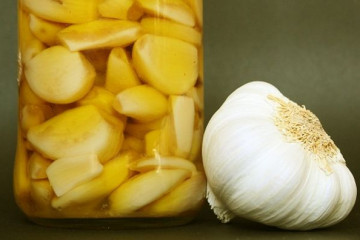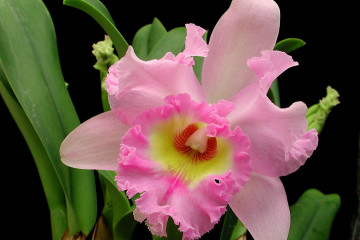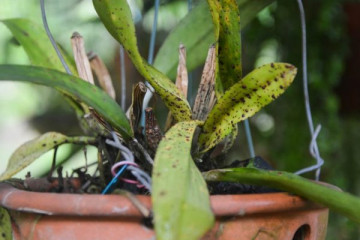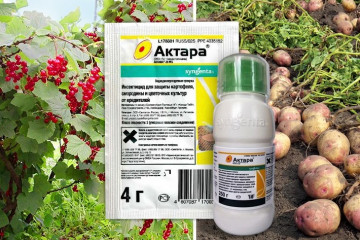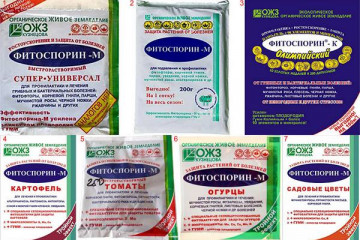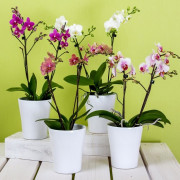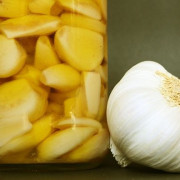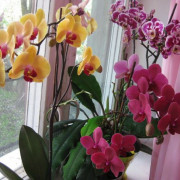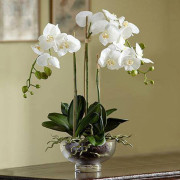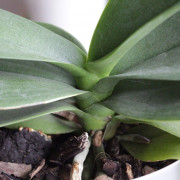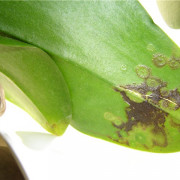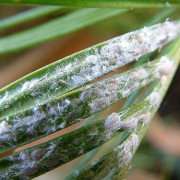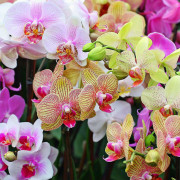Cytokinin paste for orchids: instructions for use
Content:
Cytokinin paste is a preparation containing phytohormones and vitamins in thick lanolin. The components stimulate the active division of plant cells, influencing growth, flowering and strengthening the immune system. It is in demand among flower growers engaged in the cultivation of indoor specimens, which are difficult to reproduce. Finopsis is one of the types of such plants, their babies appear very rarely and grow for a long time.
Description of the tool
The use of cytokinin paste for indoor plants has the following effects:
- stimulation of the transport of nutrients to each cell;
- stimulation of root growth;
- slowing down the aging and wilting of leaves;
- prolongation of the flowering period;
- the formation of additional kidneys.
Despite all the positive qualities of the drug, its use is limited by the following contraindications:
- the use of the paste during the period of active growth and flowering of the plant can lead to developmental disorders. With an incorrectly selected period, active additives destroy the orchid;
- a diseased plant damaged by pests or improper care may not tolerate active flowering caused by the paste;
- the application of the paste should be exclusively on future kidneys. Leaves and roots from this hormone burn and dry out;
- if the plant has a weak root system, it will not survive during artificial flowering;
- to stimulate the growth of separately planted children, the paste is not suitable;
- a plant less than two years old is best fertilized and fed with more gentle means;
- using the paste on young shoots or the tops of the shoots will destroy the entire flower.
The effect of the drug on the orchid
Cytokinin paste for orchids is actively used by breeders to get healthy babies in a shorter time than during normal flower growth. For the purpose of decoration, the paste is used to stimulate the ejection of new peduncles and extend the flowering period of orchids.
For reproduction
The advantages of using the product for these purposes:
- after applying the paste to the dormant bud, the plant forms several embryos, which makes it possible to choose the strongest one for subsequent growth;
- when it gets on the shoot, the paste participates in the establishment of the metabolic processes of the entire flower, exerting a general strengthening effect on it and slowing down the aging of the leaves;
- the mother plant becomes more resistant to possible adverse conditions or to sudden changes in temperature.
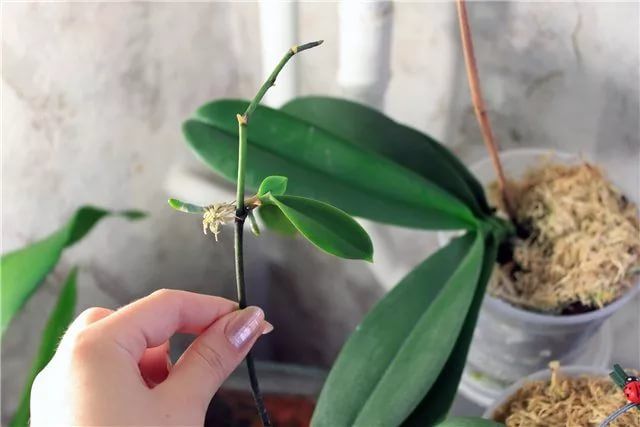
Buds form quickly without depriving the mother plant of nutrients (with proper care and additional feeding)
For flowering
Pros of using:
- paste is applied to the kidney, and therefore it is more likely that it will become a peduncle than a baby;
- the mixture promotes the development of female flowers, which allows the collection of seeds;
- flowering takes much longer than usual;
- on the new shoot, active buds are formed, which will soon be able to independently release new peduncles or children.
For rehabilitation
As a restorative agent, cytokinin ointment for orchids is rarely used. For these purposes, there are many other means that more sparingly affect the development of the plant. If, nevertheless, this particular mixture was chosen as a medicine, it should be applied in the usual way to the kidney, but after the emergence of the shoots, cut them off. So all the forces and energy will go into the plant itself, and not for the development of neoplasms.
Instructions for using the paste
Before you start treating the orchid with ointment, you should carefully study the instructions attached to it.
It is important to keep the product out of the reach of children and animals. The storage location should be dark and cold. If you put the product in the refrigerator, you should set aside a separate container for it. During use and storage, do not forget that this is a hormonal drug that causes irreversible processes.
Step-by-step instructions for using the ointment:
- The paste should be warmed to room temperature two hours before use.
- For the procedure, prepare tweezers or a sharp knife, a needle and a toothpick, having previously treated them with an antiseptic.
- For processing with paste, the lowest or highest kidney should be selected.
- The upper protective layer of the kidney must be carefully (so as not to damage the embryo itself) to move away from the trunk with a needle.
- Then, using tweezers (or for an experienced sharp knife), remove the excess part so that access to a small green dot - the future shoot - is opened.
- It is this place that needs to be processed.
Having smeared the paste on the kidney, the excess should be removed with a cotton swab dipped in water.
After application, the results are checked already on the third day. The activated buds begin to swell, and after 10 days you can determine what to expect from the embryo:
- a shoot with a sharp tip gives a future plant;
- the rounded tip of the shoot will become a peduncle.
No more than three buds can be processed on one plant. Sometimes you cannot argue with nature, and the orchid does not activate the second or third processed bud, since there is simply not enough strength for it. It also happens that three buds work, fade, but the plant soon withers before our eyes. This is the case when the paste was used on a diseased flower or susceptible to parasite attack and stress.
Further care
Since the plant was not ready for the active growth of new buds, it, accordingly, has no reserves of strength and microelements for the growth of new shoots. Therefore, it is very important to provide the orchid with proper care after cytokinin feeding:
- provide a full thermal regime. If this is the cultivation of new plants, then constant heat is required without temperature changes. If flowering is stimulated, a drop of two degrees is possible when day and night change;
- wet mode.It is worth bringing tropical conditions as close as possible, ensuring full watering and irrigation;
- lighting is more important than ever. Perhaps it was precisely because of insufficient light that the orchid refused to release new flower stalks.
In two weeks, for the first soft enrichment of the soil, watering with succinic acid is needed. Two tablets diluted in a liter of warm water are an excellent starting point for fertilization. Orchid feed should be nitrogen-containing. If the plant is harvesting buds, a potassium-phosphorus option is needed.
Any feeding requires adherence to exact instructions for use and a certain measure. If the orchid does not bloom for a long time, it will benefit from comprehensive measures to restore proper conditions of detention, as close as possible to its tropical environment. Top dressing and stimulating drugs are only helpers in caring for the plant, they are not able to replace the full-fledged care of the orchid.
